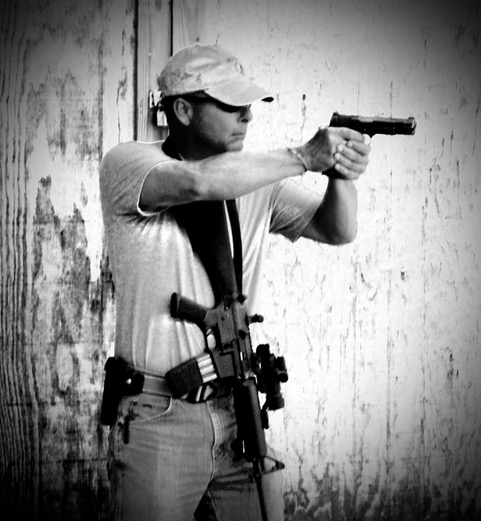 |
Today's feature is from our companion service, The Tactical Wire.
The purpose of shooting is to hit; the speed you shoot is dictated by the accuracy required. With close large targets you can hammer shots home. As the distance increases, and/or target size decreases your shooting speed decreases, ensuring you get a hit. Your firing speed varies according to what weapon you’re firing. Learning how to shoot is about discovering what speed you can shoot and still maintain the accuracy necessary.
Shooting is about hitting. Regardless of what and why you’re shooting, when you press the trigger it should result in a hit. A lot of people find this a hard concept to follow. But, if you maintain self-control, and shoot at the proper speed, every press can result in a hit. The key is not caring about how fast you shoot, but focusing on slowing down and getting hits. Eventually, and with plenty of practice – don’t forget dry practice – the speed you can shoot will increase. Trying to force yourself to become fast will never result in accurate speed. Slow down and get the hits.
“Slow” is subjective. If the shots need to go into a six-inch circle then shoot slow enough that they all go inside, but at the same time you don’t need to put shots into a one-inch group. It’s all about regulating your speed. One of the drills I have students perform is on a target with three or four one-inch targets and one six-inch target. Students start by firing surgical shots on the small targets, then switch speed to hammer hits into the large target. After some of these we’ll switch order, starting with the large targets and rapid hits, then transitioning to the small targets. This drill teaches students to vary the speed of their firing based on the accuracy required.
“Speed” is also subjective, depending on what weapon you’re firing. During Handgun/Carbine classes – working with pistol and carbine together – shooting speed must be regulated, and varied. You’re firing the carbine and it stops functioning. The most efficient way to get hits on target – as long as you’re within handgun distance – is to transition to the pistol. However, you’re not going to be able to fire the pistol, and get hits, at the same speed you were shooting with the carbine. Speed will vary according to what type pistol you’re firing – semi-auto vs. revolver. The ultimate factor again, the speed you shoot at, is dictated by the accuracy required.
This all boils down to self-control. The only thing you can control is you, and the speed you perform. This speed, especially when it comes to shooting, must also consider the weapon you’re shooting. But regardless of what you’re firing when you do press the trigger it should result in a hit.
Focus on the fundamentals – Aim, Hold, Press and Follow through. Practice at a speed that provides hits. Then the hard part in a defensive confrontation – if you’re required to shoot – is to not let the external, the fact that someone is trying to do violence against your or yours, dictate the speed you perform. The only way to do this is with plenty of practice, discovering your “speed.” This also creates confidence, which allows you to maintain control. Ultimately, confidence creates success.
Tiger McKee is director of Shootrite Firearms Academy, located in northern Alabama. He is the author of The Book of Two Guns, AR-15 Skills and Drills, featured on GunTalk’s DVD, “Fighting With The 1911 and has regular columns in Gun Digest and American Handgunner.
http://www.facebook.com/pages/Shootrite-Firearms-Academy/156608611038230?ref=ts